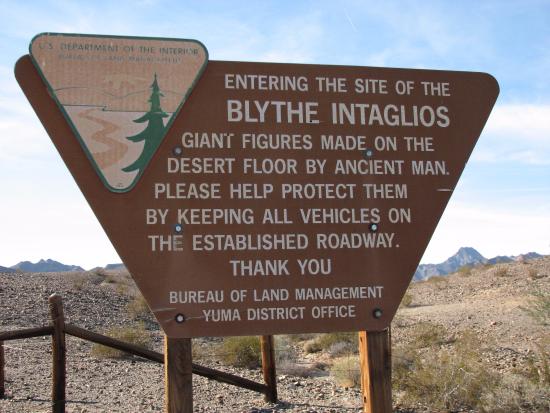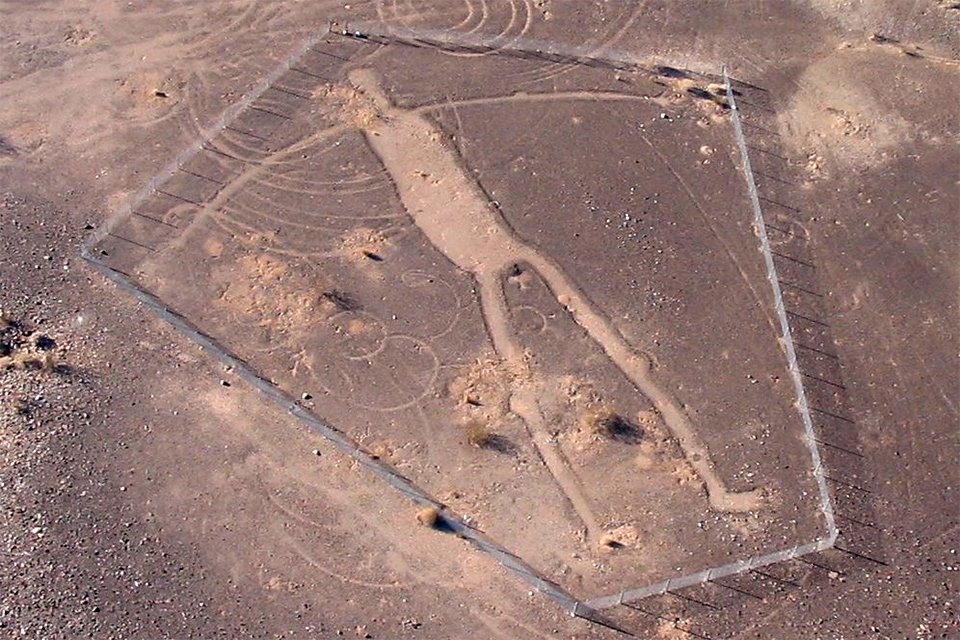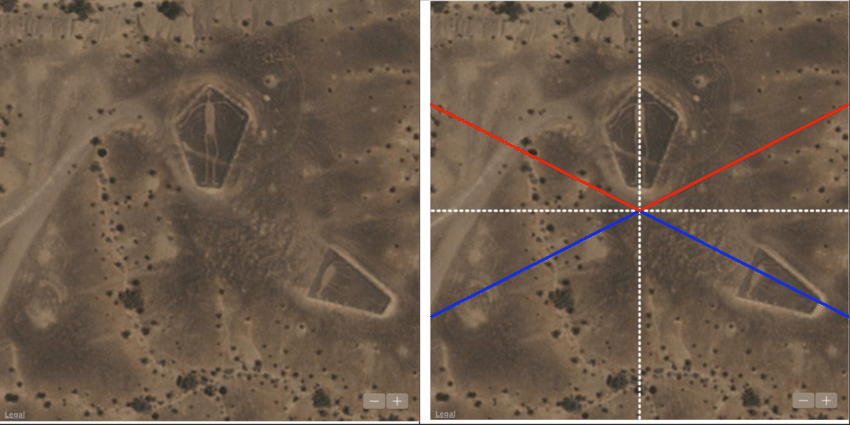The Blythe Intaglios

The Blythe Intaglios, often called the Nazca Lines of North America, are a series of gigantic geoglyphs found 25 kilometers north of Blythe, California, in the Colorado desert.
There are six figures in total scattered in three different places within a 300 meters area, located on two mesas.
The geoglyphs depict what seem to be men, animals, objects, and geometric shapes, only entirely visible from above.
The Blythe geoglyphs were first discovered on November 12, 1931, by Army Air Corps pilot George Palmer, while flying from Hoover Dam to Los Angeles.
Its discovery led to an investigation of the area, which led to the huge figures being classified as historical landmarks and called “Giant Desert Figures”.

Lacking funds due to the Depression, it would take until 1950 to investigate the site further.
In 1952, the National Geographic Society and Smithsonian Institution sent a team of archaeologists to explore the carvings, and an article appeared in the September issue of National Geographic featuring aerial photos.
It took another five years for the geoglyphs to be restored and fences erected to protect them from vandalism and damage.
It should be noted that there is visible tire damage on some of the geoglyphs due to the area being used for desert training during World War II by General George S. Patton.
Today, the Blythe Intaglios are protected by two fence lines and open to the public at all times as State Historic Monument N.101.
The creators of the Blythe Carvings are believed to be Native Americans who lived along the Colorado River, but there is no agreement as to which tribe made them or why. One advanced possibility is that they were built by the Patayans, who occupied the region from about 700 to 1550.
While the meaning behind the glyphs remains unknown, according to the area’s native Mohave and Quechan tribes, the human figures represent Mastamho, the Creator of Earth and all life, while the animal figures represent Hatakulya, one of two mountain people/lions which played a role in the history of Creation.
In ancient times, ceremonial dances were held by the natives of the area to honor the Creator of Life.
Since geoglyphs are difficult to date, it is impossible to know when they were made, but they are estimated to be between 450 and 2,000 years old.
In support of the latter hypothesis, some of the giant figures are archaeologically associated with rock dwellings of 2,000 years ago.
The largest of the carvings depicts a male figure or a giant, measuring 52 meters.
A secondary figure, measuring 31 meters from head to toe, is of a male with a distinct phallus.
The last human figure is oriented from north to south, his arms are extended, his feet point outwards and he has visible knees and elbows. It measures 32 meters from head to toe.
The Fisherman’s carving depicts a man with a spear, two fish below him, and a sun and a snake above. It is the most controversial of the glyphs, as some believe it was actually carved in the 1930s, although the prevailing opinion is that it is much older.
Whichever artist (or artists) made the Blythe geoglyphs did so by scraping off the dark desert stones to reveal lighter colored ground beneath. They outlined the symbols by piling rocks removed from the center around the outer edges, creating recessed designs.
Not only, but it also seems that the figures actually pointed to cardinal directions during the Solstices and Equinoxes.

More about the alignments can be found in the original study here.
Some suggest that these impressive ground carvings were intended for sacred messages for ancestors or designs for the gods.
Indeed, these geoglyphs are irrelevant and difficult to decipher from the ground. However, from an aerial point of view, the images become unmistakable and this is how they were first discovered.
Boma Johnson, an archaeologist with the Bureau of Land Management in Yuma, Arizona, said he couldn’t “think of a single example of a carving where a person could stand on a hill and look at a carving in its entirety.”
Today, the Blythe Intaglios are among the largest Native American designs in California, and the likelihood of discovering similar geoglyphs hidden in the desert remains a possibility.
